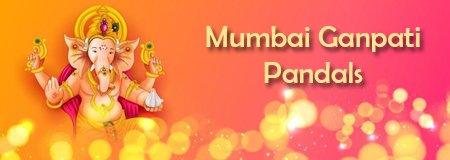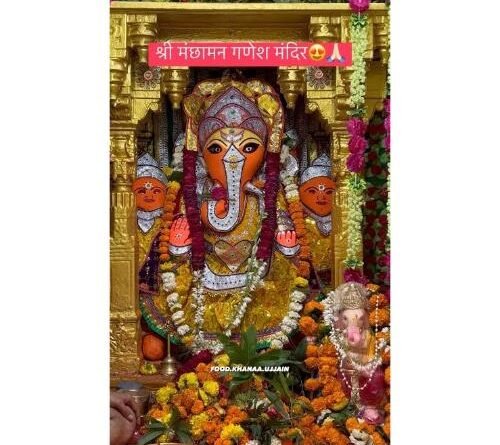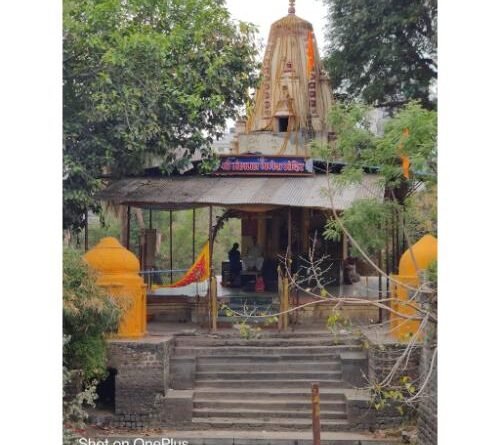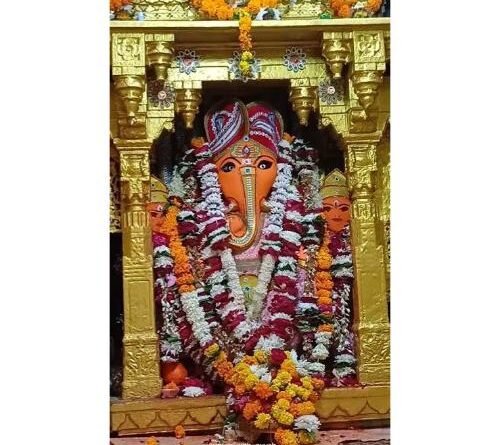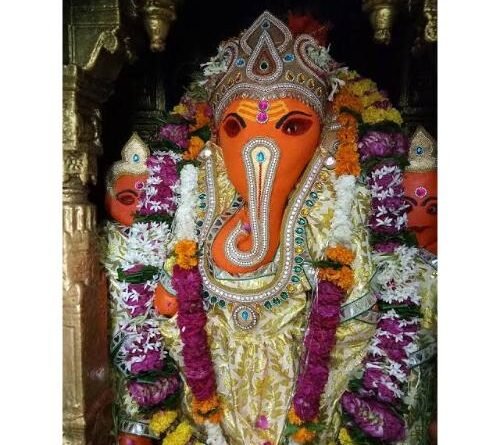Manchaman Ganapati Temple Ujjain
Manchaman Ganapati Temple is located in Keshav Nagar, near Gaokhat area in Ujjain- Madhya Pradesh.Ujjain, one of the seven sacred cities (Sapta Puri) of Hinduism, is famous for its ancient temples and deep spiritual heritage. The temple lies close to the Neelganga River, around 2 km from the Mahakaleshwar Jyotirlinga Temple, making it easily accessible for pilgrims visiting the holy city.
Main Deity
The presiding deity of the temple is Lord Ganesha, worshipped here as Manchaman Ganapati. The name “Manchaman” comes from the Sanskrit roots meaning “the one who fulfills wishes”, and it is believed that Lord Ganesh here fulfills the heartfelt desires (mancha or manasik manokamna) of his devotees. The idol of Lord Ganesha is believed to be more than 1000 years old and holds great divine energy. Devotees believe that worshipping here brings peace of mind and success in all endeavors.
On either side of Lord Ganapati stand Goddess Riddhi and Goddess Siddhi, symbolizing prosperity and success. The divine trio together represent wisdom, wealth, and fulfillment, and are worshipped by devotees seeking all-round blessings in life.
Architecture
The Manchaman Ganapati Temple is simple yet unique in design. The sanctum (garbhagriha) is ancient, made of stone, while the outer structure was renovated during the Maratha period. A striking architectural feature of the temple is that the first rays of the rising sun directly fall on the idol of Lord Ganesha every morning, symbolizing divine blessings from nature.
In front of the temple is a kund (sacred tank), which reflects the sunlight during dawn. This precise alignment shows the astronomical knowledge of the temple builders. The temple stands as a fine example of ancient architectural planning that connects spirituality with cosmic design.
History
The Manchaman Ganapati Temple has a long and revered history. It is said that the temple existed even before the medieval period, serving as a key place of worship for the local community.Ancient texts and local traditions say that Lord Brahma himself established the idol, and later it was worshipped by Lord Rama during his journey. Over centuries, saints and devotees have offered prayers here, considering it one of the sacred Ganesha shrines of Ujjain.
The temple is one among the three divine Ganesha temples in Ujjain — Chintaman Ganesh, Ichchhaman Ganesh, and Manchaman Ganesh — each representing a special power of Lord Ganesha: removing worries, granting desires, and removing troubles.
Sthalapurana
According to the Sthalapurana the Manchaman Ganapati Temple in Ujjain, is one of the most ancient shrines connected to Lord Brahma’s act of creation and Lord Rama’s visit to Ujjain.
It is said that during the early days of creation, Lord Brahma came to Avanti Kshetra (the ancient name of Ujjain) to perform a great Yajna to begin the process of creation. Before starting the Yajna, Brahma prayed to Lord Ganesha, as it is believed that no auspicious work succeeds without his blessings. Lord Brahma installed a Ganapati idol at this very spot, invoking his divine energy to remove all obstacles and ensure the success of the cosmic ritual.
The idol that appeared here is said to be Swayambhu (self-manifested). The divine presence of Lord Ganapati was so powerful that Brahma named him “Manchaman Ganapati”, meaning the Lord who fulfills manokamna (wishes) and grants success in all endeavors. From that time onward, this form of Ganesha became famous in Ujjain as the wish-fulfilling Ganapati.
Centuries later, during the Treta Yuga, when Lord Rama visited Ujjain during his travels, he came to this sacred temple to worship Manchaman Ganapati. It is believed that Lord Rama offered prayers here before setting out to face the challenges of his divine mission. He meditated upon Lord Ganapati and sought his blessings for wisdom, strength, and victory.
From that day, devotees believe that any prayer made here with full faith and pure intention gets fulfilled. The Lord is worshipped not only as the remover of obstacles (Vighnaharta) but also as the giver of boons and success. Even today, people visit the temple to seek blessings before starting new ventures, important journeys, or family functions.
Over time, this sacred spot came to be known as Manchaman Ganapati Temple, representing the divine power of Lord Ganesha who listens to every devotee’s wish and grants it with compassion.
Festivals
The temple celebrates Ganesh Chaturthi with great devotion — special pujas, aartis, and decorations attract many devotees. Sankashti Chaturthi is observed every month with fasting and prayers to seek relief from obstacles. These are the main occasions when the temple sees the largest gatherings.







